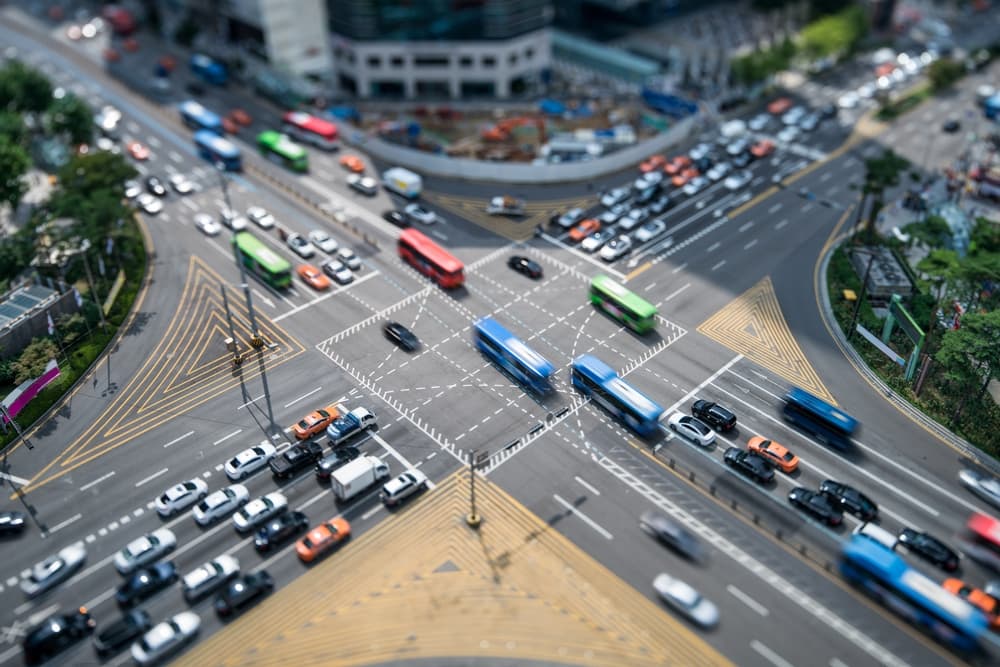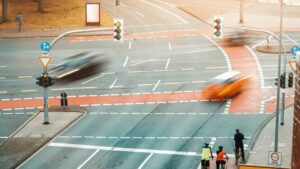San Antonio’s Most Dangerous Intersections

As the city of San Antonio continues to grow, so do its traffic challenges. Traffic safety concerns have become a pressing issue, prompting a closer look at the intersections that pose heightened risks to motorists, cyclists, and pedestrians alike. Certain intersections have emerged as focal points for accidents and safety hazards. An experienced car accident lawyer in San Antonio have turned their focus to these areas, recognizing the urgent need to pinpoint and address the risks present at the city’s most dangerous intersections. Where are San Antonio’s most dangerous intersections?
Bandera Road and Loop 1604
Bandera Road and Loop 1604, a crucial intersection in San Antonio, unfortunately, bears a concerning reputation for traffic incidents, putting it on the list of most dangerous intersections. Analysis of accident data reveals a higher-than-average frequency of collisions at this junction. Over the past several years, the intersection has been the site of numerous accidents, involving vehicles, pedestrians, and cyclists. Several factors contribute to the notoriety of Bandera Road and Loop 1604, making it imperative to address the challenges head-on:
- Traffic Volume: The intersection experiences a high volume of traffic, serving as a major thoroughfare for commuters and commercial vehicles. Increased traffic density often correlates with a higher risk of accidents.
- Intersection Design: The design of the intersection may contribute to its accident-prone nature. Poorly designed or outdated traffic patterns, confusing signage, or inadequate lane markings can lead to misunderstandings among drivers, increasing the likelihood of collisions.
- Congestion and Delay: Bandera Road and Loop 1604 are known for congestion during peak hours. Delays and congestion can lead to frustration among drivers, impacting decision-making and reaction times, and potentially resulting in accidents.
- Diverse Commuting Patterns: The intersection caters to diverse commuting patterns, including local traffic, through traffic, and commercial vehicles. The mix of different types of vehicles and commuting behaviors can create a challenging environment for safe navigation.
- Urban Development: The surrounding urban development and growth may have outpaced the original infrastructure design. This can lead to increased pressure on the intersection, causing it to become a focal point for accidents.
I-35 and Loop 410
I-35 and Loop 410, a major highway intersection in San Antonio, has been a focal point for traffic safety concerns due to its notable accident patterns. Analysis of accident data at this junction reveals a consistent occurrence of collisions, posing risks to both commuters and the surrounding community. Factors contributing to accidents include:
- High Traffic Volume: The intersection witnesses a high volume of traffic, comprising both local and interstate commuters. The sheer volume increases the probability of accidents, especially during peak hours.
- Complex Interchange Design: The complex design of the interchange between I-35 and Loop 410 may contribute to confusion among drivers. Complex interchanges often require precise navigation, and any ambiguity can lead to accidents.
- Merge and Diverge Challenges: Merge and diverge points along the highway interchange can be accident-prone areas. Rapid changes in speed and merging traffic streams can result in collisions if not navigated carefully.
- Commercial Vehicle Traffic: The intersection is a gateway for commercial vehicles, adding a layer of complexity. The presence of large trucks and freight vehicles can amplify the impact of accidents and pose unique safety challenges.
- Driver Behavior: Human factors, including distracted driving, speeding, and failure to yield, contribute significantly to accidents at this intersection. Behavioral aspects of driving play a crucial role in shaping the safety landscape.
De Zavala Road and I-10
The intersection of De Zavala Road and I-10 in San Antonio has been a focal point for safety concerns, evident through historical accident data. The following factors contribute to the intersection’s challenges:
- Traffic Congestion: High traffic congestion in the vicinity of De Zavala Road and I-10 creates a potential breeding ground for accidents. Congestion can lead to abrupt stops, sudden lane changes, and increased frustration among drivers.
- Complex Traffic Patterns: The complex traffic patterns associated with the interchange between De Zavala Road and I-10 can be challenging for drivers to navigate. Interchanges often require quick decision-making, and any confusion can result in accidents.
- Proximity to Commercial Areas: The intersection’s proximity to commercial areas may contribute to increased traffic, including commercial vehicles. The mix of commuter and freight traffic can amplify safety concerns, especially during peak hours.
- Visibility Issues: Visibility challenges, such as limited sightlines or obscured signage, can be contributing factors to accidents. Addressing these issues is crucial for preventing collisions at the intersection.
Culebra Road and Loop 410
The intersection of Culebra Road and Loop 410 in San Antonio presents several challenges that contribute to safety concerns and accidents:
- High Traffic Volume: The intersection experiences consistently high traffic volume, including a mix of local and through traffic. Heavy congestion during peak hours can lead to increased accident risk due to frequent stops and rapid changes in traffic flow.
- Complex Intersection Design: The design of Culebra Road and Loop 410 is intricate, with multiple entry and exit points, making it challenging for drivers to navigate smoothly. The complexity of the intersection design can contribute to misunderstandings and accidents.
- Pedestrian and Cyclist Safety: Safety concerns extend beyond vehicular traffic, with challenges in ensuring the safety of pedestrians and cyclists crossing or navigating the intersection. Insufficient pedestrian infrastructure and unclear crossings can elevate the risk for vulnerable road users.
- Visibility Issues: Limited visibility at certain points within the intersection, whether due to landscaping, signage placement, or physical obstacles, can impede drivers’ ability to anticipate and react to traffic conditions, increasing the likelihood of accidents.
- Diverse Commuting Patterns: The intersection caters to a diverse range of commuting patterns, including local residents, commuters passing through, and commercial traffic. The mix of different types of vehicles and driving behaviors heightens the complexity of managing traffic safely.
Common Risk Factors for San Antonio Intersections
To understand why intersections in San Antonio can be risky, we need to look at different factors. These factors, like the types of people using the roads and how intersections are designed, contribute to creating dangerous intersections.
- Traffic Volume: This is on the list of all San Antonio’s most dangerous intersections. High traffic volume at intersections increases the likelihood of accidents. Congestion and the presence of numerous vehicles create complex traffic dynamics, leading to a higher risk of crashes.
- Diverse Road Users: Intersections are points where various road users converge, including pedestrians, cyclists, and different types of vehicles. The diversity of users adds complexity to traffic management and increases the potential for accidents.
- Complex Geometry: The geometric layout of intersections can contribute to their dangerous nature. Complex designs, multiple lanes, and intricate traffic patterns may challenge drivers, leading to confusion and errors in navigation.
- Turning Movements: Left-turn and right-turn movements at intersections can be particularly risky. Conflicts between turning and through traffic, misjudgments of gaps, and failure to yield contribute to a significant portion of intersection accidents.
- Visibility Challenges: Poor visibility due to obstacles, inadequate lighting, or inadequate signage can impede drivers’ ability to see approaching vehicles, pedestrians, or signals, increasing the risk of accidents.
- Traffic Signal Timing Issues: Improperly timed traffic signals or inadequate signal coordination can lead to conflicts between traffic movements. Short signal phases or inconsistent timings may contribute to accidents.
- Driver Behavior: Behaviors such as distracted driving, speeding, running red lights, and aggressive driving significantly contribute to intersection accidents. Failure to obey traffic rules and signals can result in dangerous situations.
- Infrastructure Deficiencies: Aging or poorly maintained infrastructure, including faded road markings, non-functioning traffic signals, or poorly designed intersections, can create hazards that contribute to accidents.
- Urban Development: Rapid urbanization and changes in land use may outpace the original design of intersections, leading to increased traffic demands that the infrastructure may struggle to accommodate.
- Enforcement Challenges: Inconsistent or inadequate enforcement of traffic laws at intersections can contribute to a culture of non-compliance, leading to unsafe driving practices.
Addressing these factors requires a multifaceted approach involving improved infrastructure design, public awareness campaigns, targeted enforcement, and ongoing efforts to adapt to changing traffic patterns and urban development.
Importance of Identifying and Addressing Dangerous Intersections

The primary concern in identifying San Antonio’s most dangerous intersections is the well-being of San Antonio residents and visitors. Identifying dangerous intersections is crucial for preventing accidents and minimizing injuries, fostering a safer environment for everyone. Concerns include:
- Reducing Traffic Fatalities: Traffic accidents can result in severe consequences, including fatalities. Identifying and addressing dangerous intersections is a key strategy in reducing the number of lives lost on San Antonio’s roads. The Texas Department of Transportation (TxDOT) reports that in one year one person was killed every hour and 57 minutes on Texas roads. A person was injured in a San Antonio traffic crash every two minutes and 11 seconds, and there was one reportable crash every 57 seconds.
- Economic Impact: Traffic accidents lead to significant economic losses, affecting individuals, businesses, and the city as a whole. By addressing dangerous intersections, San Antonio can mitigate these financial burdens.
- Enhancing Commuter Experience: Improving the safety of intersections contributes to a smoother and more efficient commuting experience. This not only reduces stress for residents but also encourages economic activity by facilitating easier transportation.
- Community Well-being: Dangerous intersections can create a sense of unease within communities. Identifying and rectifying safety concerns fosters a sense of security, promoting overall community well-being.
- City Development: As San Antonio continues to develop, the identification and improvement of dangerous intersections play a pivotal role in urban planning. It ensures that the city evolves with a keen eye on the safety and quality of life for its residents.
Contact Lorenz & Lorenz Accident & Injury Lawyers PLLC

Ted R. Lorenz, Car Accidnet Lawyer in San Antonio, TX
If you’ve experienced injuries in a traffic accident at a San Antonio intersection, taking the right steps is crucial. ContactLorenz & Lorenz Accident & Injury Lawyers PLLC today to ensure that your rights are protected and to seek the compensation you deserve. With a local office in San Antonio, our experienced San Antonio personal injury lawyers are well-acquainted with the city’s traffic dynamics and are readily accessible to address your concerns. We understand the complexities of intersection accidents and are committed to guiding you through the legal process. Don’t face the aftermath of a traffic accident alone – reach out to Lorenz & Lorenz Accident & Injury Lawyers PLLC now to schedule a consultation. Take the first step towards securing the support and representation you need. Your well-being matters, and we are here to help you navigate the path to recovery. Call our San Antonio law office at (210) 320-1529 or complete our online contact form.
